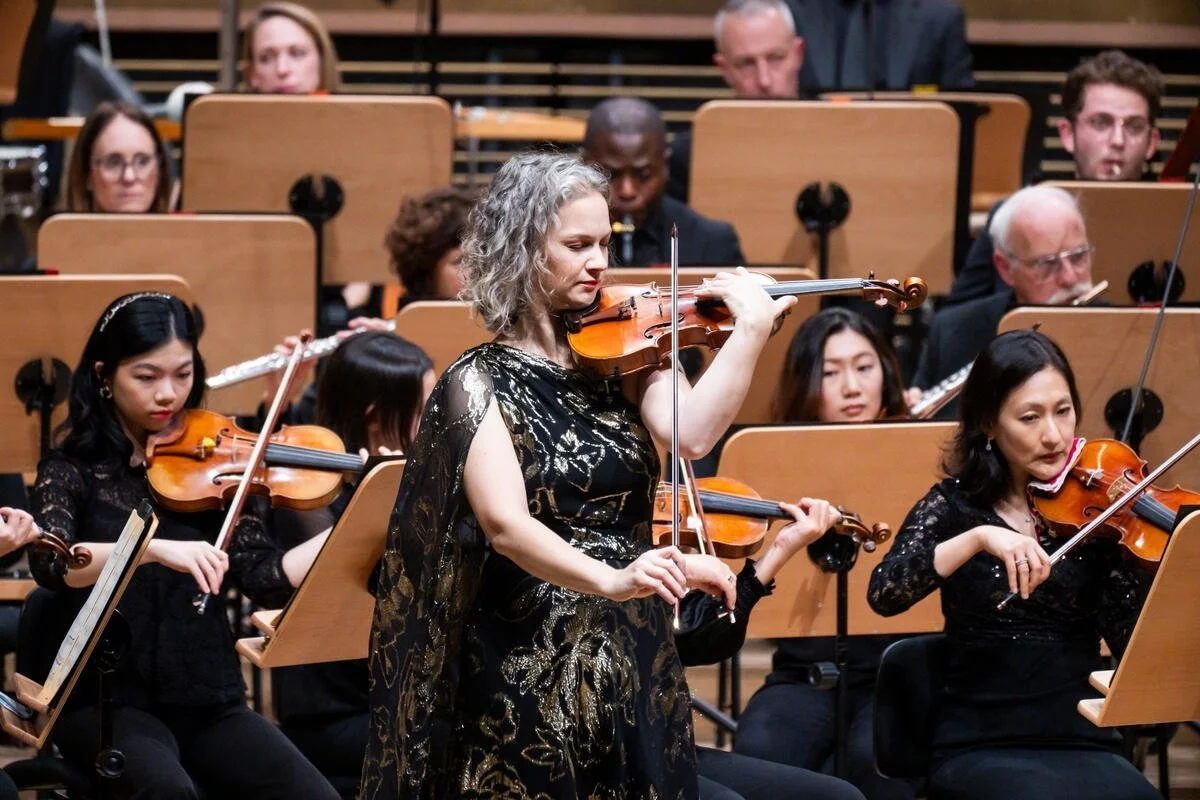REVIEW: Elia Cecino's Revealing New York Debut
Above photo by Kathryn Tornelli
January 16, 2024
Kaufman Music Center’s Merkin Hall fell under the charm of Elia Cecino, an Italian pianist of prodigious virtuosity, at Tuesday’s matinee, witnessing his auspicious New York debut. In a rich program, at once searching and revealing, Cecino carved a distinctive niche on the concert stage. At the precocious age of twenty-two, Cecino embodies the archetype of young hero — teeming with desire and ambition — but also an old soul, wise beyond his years.
He struts elegantly across the stage, but appears happiest and most confident perched at the Steinway. His fingers fly effortlessly, but always toward a meaningful destination. An artist who understands the storytelling capacity of his instrument, Cecino weaved a compelling romantic journey from Frédéric Chopin’s Sonata No. 2 in B-flat Minor, Op. 35 to Sergei Prokofiev’s Sonata No. 7 in B-flat major, Op. 83.
Elia Cecino, Merkin Hall. (Photo by Kathryn Tornelli.)
About Chopin’s Second Sonata, Robert Schumann famously complained it contains four of the composer’s “maddest children under the same roof.” Cecino’s interpretation pours forth with a combination of impetuousness, introspection, and anxiety. The first movement’s windswept agitato conjured a harrowing drive in a horse-drawn carriage through a thunder storm, bringing to life Chopin’s skipped heartbeats and bumps in the road.
His touch is nimble, yet like a cinematographer fond of closeup shots, he assertively focuses on melody. In the sostenuto song of celebration that rounds out the first movement’s recapitulation, Cecino sustained long-lined phrases with the lyrical power of a spinto tenor.
The mournful lament of the Marche funébre, the Sonata’s famous slow movement, was painted with a disparate color palette. Haunted and whispering at first, the second theme turns to sweet reflection; the march rhythm swayed forward with the insistence of fate. Cecino then tore into the finale — a brief, enigmatic Presto marked sotto voce e legato — at an electric tempo, and with just enough pedal to shade it with the aura of an apparition.
Cecino then continued down a path of churning, intensifying Romanticism: the first stop, Johannes Brahms’ Klavierstücke, Op. 119. He played the three Intermezzi and final Rhapsody with lithe flexibility; unburdened by the lugubriousness often associated with Brahms, Cecino set him afloat. In the first Intermezzo in B minor, he took the tempo indication Adagio to heart, coaxing an orchestral legato from the contrapuntal texture. The E minor second piece, Andantino un poco agitato, placed emphasis on ‘agitato,’ allowing the middle passage, Andantino grazioso, to provide warm relief. Cecino’s take on the third Intermezzo, Grazioso e giocoso in C major, was impish — light and bouncy — contrasting with the forceful Allegro risoluto in E-flat, both pieces anchored by the melody in the treble.
Following intermission, Cecino launched into the rarely played Sonetti del Petrarca (from Years of Pilgrimage, S 161, a set of three suites) by quintessential Romantic pianist Franz Liszt. Three character pieces inspired by sonnets by Francesco Petrarca, a humanist poet of the Italian Renaissance, these are torrential impromptus of heedless chromaticism ruminating on the subject of passionate love.
It’s telling of Cecino’s depth of character that he chose to play these dense, heady pieces — as harmonically unstable as anything Wagner would later invent — rather than one of Liszt’s easier sells (consider the Instagram popularity of the vapid La Campanella). But here is a dramaturg, rather than showman — and the following piece, a contemporary addendum to Liszt’s Petrarca Sonnets, provided an inspired transition to the twentieth century.
Elia Cecino, Merkin Hall. (Photo by Kathryn Tornelli.)
Orazio Sciortino’s Nuovo Sonetto del Petrarca, composed in 2022 and receiving its US Premiere with this performance, received an insightful rendering by Cecino, a glue adhering to the mood and sentiment of Liszt and Brahms. In Sciortino’s bittersweet confession, we hear the influence of a century of harmonic pollution, and realize that Cecino’s vocabulary spans centuries.
This detour brings our story full-circle. Nearly a century passed between the completion of Chopin’s B-flat minor Sonata and Prokofiev’s sketches for his three “War Sonatas.” Containing the Russian composer’s most urgent music, his abstract-leaning Seventh Sonata — like the Chopin, centered on a tonal center of B-flat — remains his most popular (and yet, esoteric) solo piano work.
Elia Cecino, Merkin Hall. (Photo by Kathryn Tornelli.)
In three contrasting movements we confront a breakdown of imposing forces, an existential struggle, and finally, a triumph of the human spirit. Prokofiev’s Seventh, in addition to lacking his usual trappings of irony, shares with Chopin’s Second a fascination with motoric rhythm, in particular that of the “tarantella,” which Chopin references in his finale, and Prokofiev picks up in his first movement.
Cecino’s rich singing line feasted upon the E major slow movement’s Andante calorosa, while climactic bell-tolls depict utter devastation. Prokofiev orchestrates for the piano, multi-planed, and Cecino commits intrinsically. The Precipitato third movement brought the audience to its feet. It didn’t need to be as fast as Cecino attempted, but his gamble was impressive for its ambition — and because he nailed it.
***








